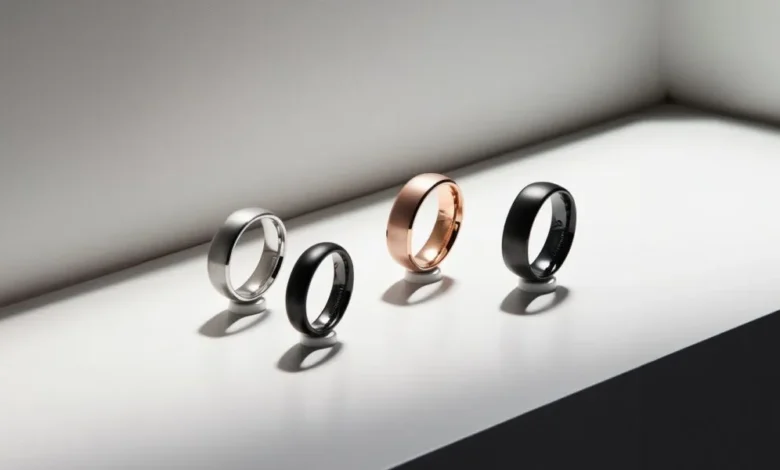What Is a Smart Ring Used For? A New Era in Holistic Health Tracking

When you think of wearable tech, your mind might go straight to smartwatches or fitness bands.
But there’s a new player in town that’s gaining serious attention—smart rings. These tiny devices are not just trendy accessories. They’re powerful wellness tools that fit on your finger and quietly collect health data around the clock.
So, what are smart rings for? They’re used to track your sleep, monitor your heart rate, help manage stress, and even measure body temperature—all without the bulk of a wrist device.
In this article, we’ll break down exactly how smart rings are changing the way we understand our bodies and take care of our health.
Small in Size, Big on Features
A smart ring may look like a regular ring, but inside, it’s loaded with sensors. These sensors gather information about your body and behavior throughout the day and night. Most smart rings track:
- Heart rate
- Heart rate variability (HRV)
- Blood oxygen levels
- Body temperature
- Sleep cycles
- Activity and steps
Despite their tiny size, smart rings can deliver nearly the same health insights as larger wearable devices. This makes them perfect for people who want powerful health tracking in a more discreet form.
The Power of Sleep Tracking
Sleep is one of the most important parts of your overall health. If you’re not getting enough quality sleep, it can affect your mood, energy, memory, and immune system. Smart rings give you detailed reports about how well you’re sleeping each night.
They track:
- When you fall asleep
- How long you stay asleep
- How much deep sleep, light sleep, and REM sleep you get
- How often you wake up during the night
Some smart rings even give you a “sleep score” so you can easily see how you did and how to improve your rest.
Stress and Recovery: Know When to Slow Down
Smart rings don’t just tell you how active you are—they also help you understand how well you’re recovering. This is where heart rate variability (HRV) comes in.
HRV measures the time between your heartbeats. A higher HRV usually means your body is well-rested and ready to take on stress. A lower HRV may suggest you need more recovery time.
By watching these patterns, smart rings can gently suggest when you should take it easy, especially after a tough workout, a stressful day, or a poor night’s sleep.
Fitness and Daily Activity Tracking
Smart rings are great for tracking your physical activity. While they might not offer GPS or display screens like smartwatches, they can still count your steps, movement, and calorie burn.
Many smart rings are paired with apps that show your activity trends, helping you stay consistent with your health goals.
You can also set gentle movement reminders or goals for how much you want to walk each day. Over time, this keeps you more active without needing to constantly check your phone or wear a fitness band.
Women’s Health and Cycle Tracking
Some smart rings offer temperature tracking that’s accurate enough to help predict ovulation and track menstrual cycles. This can be very helpful for people trying to understand fertility windows or simply monitor hormonal changes.
Instead of guessing when changes happen, the ring gives real data based on your unique body rhythms. It adds a whole new level of insight into women’s health, naturally and privately.
Long Battery Life and Comfort
Smart rings are designed to be worn 24/7. That’s why many of them are made from lightweight, smooth materials like titanium or ceramic. Some even have water resistance so you can wear them while showering or swimming.
One of the best features? The battery life. Many smart rings last 4–7 days on a single charge, much longer than most smartwatches. This means you can get non-stop health tracking without the hassle of daily charging.
Why People Love Smart Rings
Here’s why more people are choosing smart rings over other wearables:
- Minimal design – No screens or buzzing. Just quiet, powerful tracking.
- Improved sleep data – Many users say their sleep tracking feels more accurate.
- Great for travel – Lightweight and low-maintenance.
- Works with apps – Most smart rings connect to apps for deeper health insights.
- Blends in with everyday outfits – Looks like a stylish accessory.
Looking Ahead: The Future of Smart Rings
Smart rings are still a growing technology, but they’re moving fast. Companies are adding more features like mood detection, blood pressure sensing, and even contactless payments.
Soon, your ring might help you unlock your door, pay for groceries, and guide your meditation—all while keeping an eye on your health.
As people focus more on whole-body wellness, smart rings are stepping up as a tool that fits right into your everyday life. They’re not just about tech—they’re about helping you feel better, sleep deeper, and stay more in tune with your body.




